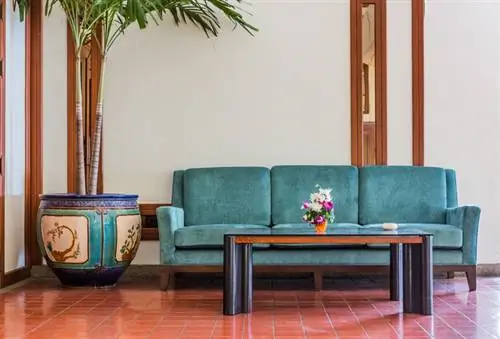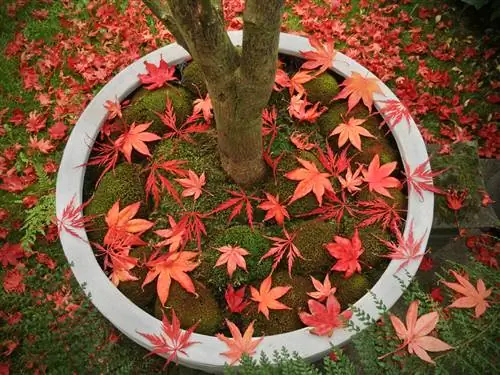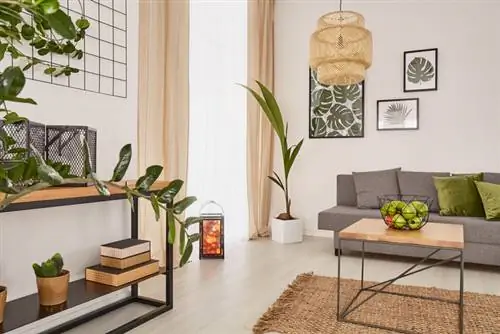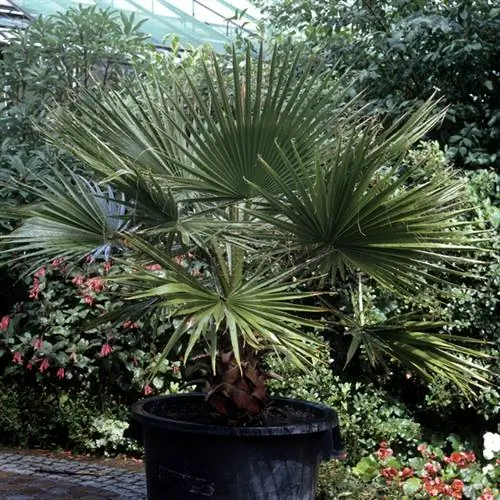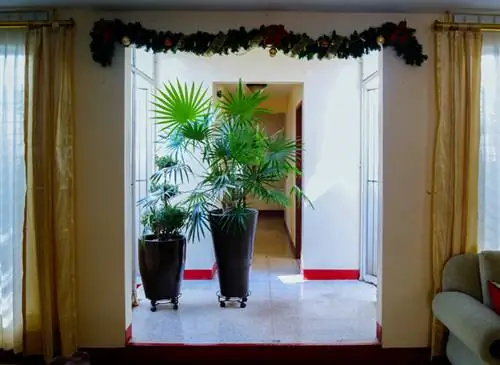- Author admin [email protected].
- Public 2023-12-16 16:46.
- Last modified 2025-01-23 11:20.
When the roots of a palm tree grow out of the pot, it is time to transplant the southern beauty into a larger container. In order for this care measure to be successful and for the plant to continue to grow well, there are a few basic things you need to keep in mind.
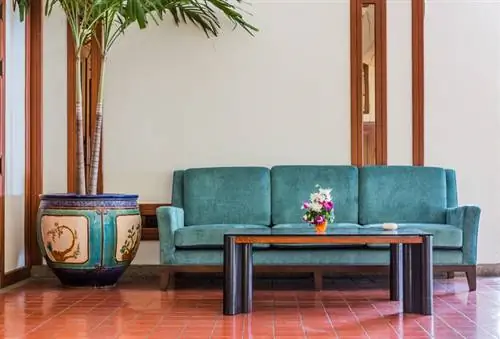
How do you properly repot a palm tree?
To properly repot a palm tree, choose spring as the ideal time, prepare a suitable substrate and ensure good drainage in the new pot. Carefully removing the old pot, removing dead root parts and then placing the palm tree in the new pot are also important.
The palm tree quickly becomes too narrow
Sometimes the plant lover only notices the cracks in the clay pot that it is high time to repot. Palm trees develop a very strong root system that is capable of bursting the container. In a pot with a crack, the substrate dries out far too quickly. If the main root clogs the drainage hole, water can no longer flow out and there is a risk of waterlogging, to which the plant is very sensitive.
The right time
The best time to transplant is the beginning of the growing season in spring. The months March to May are ideal. If the pot turns out to be too small over the course of the year, it can still be repotted in the summer.
Unpotting the palm tree
Water the palm tree well before moving so that the root ball does not fall apart. Then proceed as follows:
- Remove the old pot very carefully so as not to damage the roots. Palm trees react very sensitively to this.
- If it can't be pulled off, it's better to smash or cut it to protect the roots.
- Carefully remove used substrate.
- Cut off dead root parts with a sharp knife. This also applies to the root spirals at the bottom of the pot, which are often found in strongly growing specimens.
To prevent growth too quickly, the new planter should not be too large. A tall clay pot or bucket that is at most two sizes larger is ideal.
The substrate
Which soil palms prefer depends on the region in which they originally grow. Place heat-loving palm plants in a mixture of heather and leafy soil with a small amount of peat, river sand and clay. Palm trees that thrive in cooler areas require a mixture of topsoil, some heather soil and lots of soft sand.
Ensure good water drainage
Palm trees are very sensitive to waterlogging. It is therefore essential that the new pot has sufficiently large drainage holes. These are covered with potsherds so that the substrate does not clog them.
Then fill a drainage layer of expanded clay into the container. This not only stores a small supply of water, but also ensures that excess water is drained away quickly.
Insert palm tree
Place a thin layer of substrate on top and place the root ball of the palm on top. Fill with soil, press down well and water.
Tip
Large planters are difficult to transport. Not only garden lovers have this painful experience; retailers are also struggling with this fact. Many palm trees are therefore sold in pots that are too small. Please always check how much substrate the new purchase has available. It is often necessary to plant the plant immediately after purchase.

